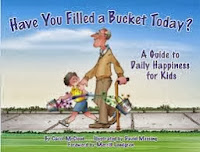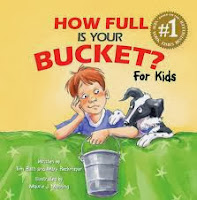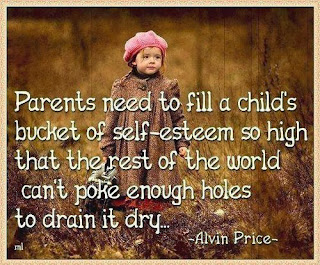There’s a lot of “bucket filling” in the Robins class at KIDSPACE Child Enrichment Center. What is “bucket filling” you ask? Bucket filling runs on the pretense that everyone has an invisible bucket. We feel good when our bucket is full and not so good when our bucket is empty. There have been a number of books written on this topic for adults and children. Our favorites at KIDSPACE for the preschool crowd are:
We fill other people’s buckets by using kind, considerate words and doing acts of kindness. However, the children are also realizing that when they fill other’s buckets it also fills their own buckets. They are understanding what it feels like to have a full bucket and what it feels like to have an empty bucket. Even as adults, we sometimes don’t understand why we feel the way that we do. The “bucket filling” concept makes sense at any age. We all need to pause and take a look at our buckets when we’re feeling down. If our bucket is on the empty side we need to find a way to fill it back up. We can fill our own buckets by filling other’s buckets or we can ask others to help us fill up our buckets.
The students write notes and draw pictures for their classmates as a way to fill buckets.
Sometimes a bucket can be emptied quickly by “bucket dippers.” “Bucket dipping” is the act of emptying buckets. We can dip into our own bucket by being unkind with others or someone else can dip from our buckets with thoughtless and/or unkind actions toward us.
When children can label their actions toward others as “bucket filling” or “bucket dipping” it helps them to see more clearly how their actions directly affect others and themselves.
As parents and educators it is our responsibility to fill and continue to fill our children’s buckets to the brim. When children have full buckets they manage themselves far better than those children who operate with buckets that are on the empty side. Full buckets also give children a strong desire to learn, confidence to make good decisions, be thoughtful friends and enjoy community with others.
Bucket filling is NOT empty praise. Bucket filling is sincere, honest and addresses the actions and character of the child (or adult).
Bucket Filling: “You spent a lot of time cleaning your room today. You showed me you are a hard worker and you like your Legos organized. What part of your room will you work on next?”
Empty Praise: “You are such a good boy/girl.”
Bucket Dipping: “You worked all this time in your room and all you did was clean up your legos?”
Bucket filling is a simple concept, yet it makes big, positive differences in the lives of those we touch and those we love.

 Schedule Tour
Schedule Tour



